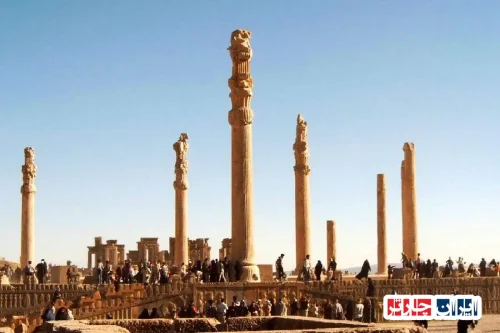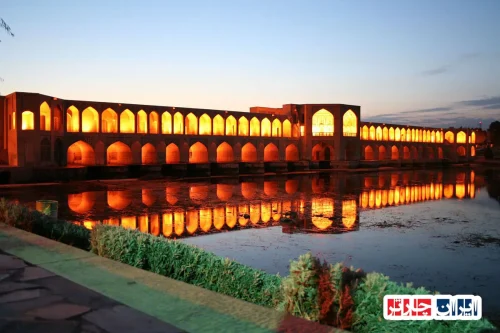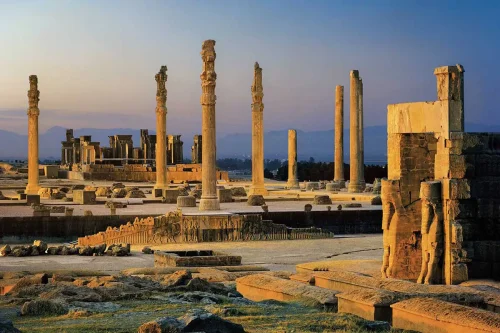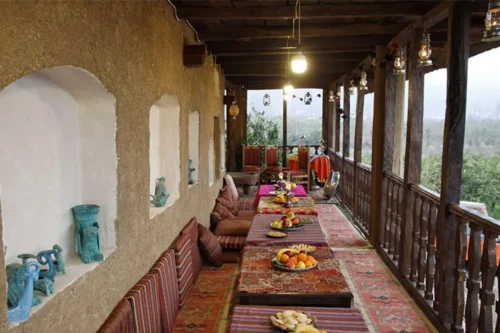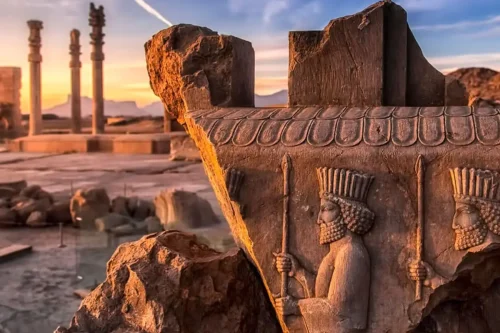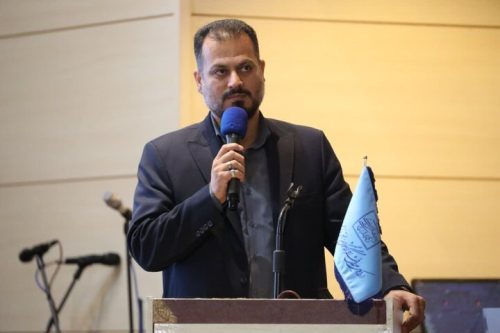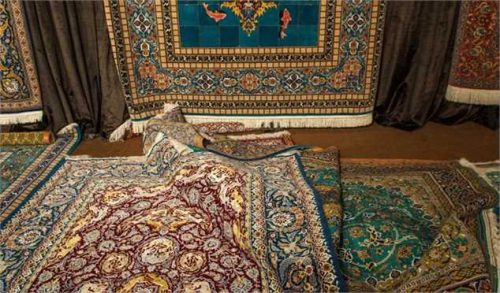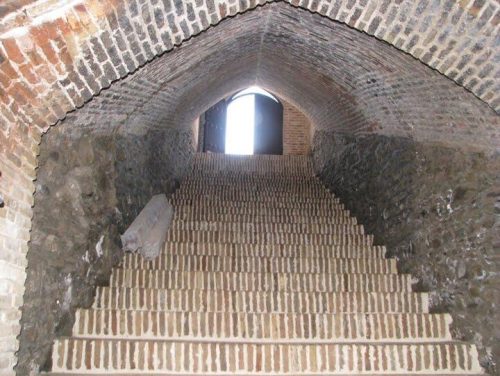News Source : https://www.mehrnews.com/news/6295738/%D8%A8%D8%B1%D9%86%D8%A7%D9%85%D9%87-%D8%A7%D9%82%D8%AF%D8%A7%D9%85-%D9%81%D9%88%D8%B1%DB%8C-%DA%AF%D8%B1%D8%AF%D8%B4%DA%AF%D8%B1%DB%8C-%D8%A7%DB%8C%D8%B1%D8%A7%D9%86-%D8%AA%D8%AF%D9%88%DB%8C%D9%86-%D8%B4%D8%AF
The ‘Immediate Action Plan for Iranian Tourism’ Has Been Developed
The Immediate Action Plan for Iranian Tourism has been developed and announced for the first time in the country to guide current trends and improve green tourism indicators. This plan is designed to reduce the tourism sector’s contribution to greenhouse gas emissions, which have increased over the past two decades. The Secretary of the Green Tourism Committee emphasized that climate change has significantly impacted Iran’s tourism resources and destinations, and without implementing this plan, the country’s tourism industry will face serious challenges. The Immediate Action Plan for Iranian Tourism includes various axes, each of which has a special importance for different parts of tourism. These axes include the General Directorate of Investment, the General Directorate of Studies and Planning, the General Directorate of Supervision and Evaluation of Tourism Facilities, and other related sectors. The ‘Immediate Action Plan for Iranian Tourism’ has been developed as an effective step towards sustainable tourism development in the country. Implementing this plan requires the support and cooperation of all stakeholders in the tourism sector to achieve the set goals and guide Iran’s tourism industry towards sustainable improvement and growth.
Introduction to Iran’s Immediate Tourism Action Plan
The Immediate Tourism Action Plan for Iran has been formulated and presented, aiming at guiding and improving the green tourism indicators in the country, playing a key role in the sustainable development of the tourism industry. Iran Charter, as a pioneer in this field, has played an important role in drafting this plan. With the increasing share of tourism in the production of greenhouse gases and the impact of climate change, this plan provides actions to reduce the negative effects of these trends.
Main Objectives of Iran’s Tourism Development Plan
The Immediate Tourism Action Plan for Iran sets explicit goals for the development of green tourism, striving to guide the country’s tourism industry towards sustainable growth. The main objectives include reducing the consumption of natural resources, increasing public awareness about green tourism, and enhancing the quality of tourism services. Iran Charter, by offering innovative solutions and collaborating with various institutions, has taken significant steps toward achieving these goals.
Key Pillars of Iran’s Immediate Tourism Action Plan
The Immediate Tourism Action Plan for Iran comprises several pillars, each aimed at improving different sectors of the tourism industry. Among these pillars are investments in sustainable infrastructure, educating and raising awareness among tourism stakeholders, and monitoring and evaluating tourism facilities. Iran Charter, focusing on these pillars, plays an essential role in the effective implementation of the plan.
The Role of Iran Charter in Implementing the Immediate Tourism Action Plan
As a reputable brand in the tourism industry, Iran Charter plays a crucial role in executing the Immediate Tourism Action Plan. By leveraging its experience and expertise, Iran Charter actively participates in developing educational programs, promoting green tourism, and providing consultancy services to governmental and private entities. These collaborations facilitate the swift implementation of the plan and increase its effectiveness.
Impacts of Iran’s Immediate Tourism Action Plan on Green Tourism in Iran
The Immediate Tourism Action Plan for Iran has broad impacts on green tourism in the country. With its implementation, it is expected that the consumption of natural resources will be optimized, pollution will be reduced, and the quality of visiting tourist destinations will improve. Iran Charter, by providing innovative solutions and promoting sustainable behaviors, significantly contributes to enhancing the state of green tourism in Iran.
Support and Collaborations of Stakeholders in Iran’s Immediate Tourism Action Plan
The effective implementation of the Immediate Tourism Action Plan for Iran requires the support and cooperation of all stakeholders in this field. The government, public and private institutions, and even tourists have vital roles in realizing the plan’s goals. Iran Charter, by creating cooperation networks and promoting green tourism culture, helps strengthen stakeholder collaborations and increase motivation for active participation in the action plan.
Marketing Strategies for Iran’s Immediate Tourism Action Plan
To attract domestic and foreign tourists to green tourism destinations, the Immediate Tourism Action Plan for Iran utilizes effective marketing strategies. Targeted advertising, participation in international exhibitions, and the use of digital media are among these strategies. Iran Charter, by running advertising campaigns and creating digital platforms, plays a key role in increasing the visibility of the plan and attracting tourists.
Evaluation and Monitoring of the Implementation of Iran’s Immediate Tourism Action Plan
The Immediate Tourism Action Plan for Iran, by drafting precise evaluation and monitoring systems, seeks to ensure the effective and sustainable implementation of the plan. Monitoring tools assess the progress in achieving the plan’s goals and its impacts on the tourism industry. Iran Charter provides expert insights and improvement suggestions, playing an active role in optimizing business processes.
The Future of Iran’s Tourism After the Immediate Tourism Action Plan
With the implementation of the Immediate Tourism Action Plan for Iran, the future of the country’s tourism industry appears brighter and more sustainable. The increase in the number of tourists, improvement in service quality, and conservation of natural resources are among the program’s expectations. By continuing active collaborations and providing continuous innovations, Iran Charter helps strengthen Iran’s position in the global tourism market.
Challenges Facing Iran’s Immediate Tourism Action Plan and Proposed Solutions
Throughout the implementation of the Immediate Tourism Action Plan for Iran, several challenges will be encountered. Among these challenges are budget constraints, resistance to changes, and the need for specialized training. Iran Charter addresses these challenges by offering innovative solutions, including attracting private investments, organizing training courses, and creating financial incentives for tourism stakeholders.
FAQ
- What is Iran’s Immediate Tourism Action Plan?
- Iran’s Immediate Tourism Action Plan is an initiative aimed at directing current trends and improving green tourism indicators in Iran, formulated and announced for the first time in the country.
- What is the main objective of this plan?
- The main objective of the plan is to reduce the share of tourism in greenhouse gas production and address the increase in this share from about 5% to nearly 9% over the past two decades.
- How has climate change impacted Iranian tourism?
- Climate change has significantly affected Iran’s tourism resources and destinations, and without immediate action, the country’s tourism industry will face serious challenges.
- Why is the formulation of this plan necessary?
- Given the predicted serious problems facing Iran’s tourism industry before reaching maturity, it is necessary to formulate this plan to prevent the damage to tourism resources.
- Who is Mohammad Jahanshahi and what is his role in this plan?
- Mohammad Jahanshahi is the Secretary of the National Committee of Ecotourism and Green Tourism, who has stated that without changes and emergency measures, many tourism destinations will face failure.
- How has Iran’s Immediate Tourism Action Plan been formulated?
- This plan has been formulated with a focus on the operational behaviors of the Tourism Deputy, considering existing capacities and limitations, as a short-term and tactical plan.
- What are the key pillars of this plan?
- The Immediate Action Plan includes nine key pillars, each related to different sections of the Tourism Deputy, such as investment, studies and training, supervision and evaluation of facilities, domestic tourism development, foreign marketing, the National Committee of Ecotourism, the Tourism Research Institute, public relations, and executive management.
- What is the role of the Investment Directorate in this plan?
- The Investment Directorate focuses on promoting sustainable architecture, reducing long-term costs resulting from the consumption of water and energy resources, supporting sustainable-oriented projects, and increasing eco-friendly considerations in investment plans.
- How does the Directorate of Studies, Training, and Planning contribute to the plan?
- This directorate contributes by enhancing community awareness of green tourism concepts through educational courses and publishing related content, collaborating with educational institutions to expand experts and managers’ knowledge in this field.
- What actions does the Directorate of Supervision and Evaluation of Tourism Facilities undertake?
- This directorate develops criteria and considerations related to green tourism in facility documents and standards, creating incentive tools like certificates and labels for sustainable facilities.
- How does the program contribute to domestic tourism development?
- The program enhances domestic tourism by increasing the number of global tourism villages to improve indicators and the quality of living spaces, implementing destination management projects in vulnerable areas as pilot examples.
- What is the role of the Directorate of Foreign Tourism Marketing and Advertising in this plan?
- This directorate fulfills its role by engaging with international organizations, participating in scientific and educational events to exchange experiences, and publishing reports on meetings and events related to green tourism.
- What activities does the National Committee of Ecotourism undertake?
- This committee supports projects aimed at reducing unsustainable growth, formulates wildlife tour guidelines, creates a database of green tourism activists, and supports exemplary projects.
- How does the Tourism Research Institute contribute to the plan?
- The Tourism Research Institute defines research axes related to sustainability indicators in tourism, supports research projects, and increases the share of science-based events focusing on green tourism.
- What is the role of Public Relations in implementing the plan?
- Public Relations plays a critical role by producing and disseminating educational content about green tourism principles and using advertising tools to raise awareness of green concepts in society.
- How does executive management help optimize resource consumption?
- Executive management aids in this endeavor by implementing resource-saving instructions and managing resources efficiently in the workplace, encouraging colleagues to provide ideas and initiatives to optimize resource consumption.
- What role has the Minister of Cultural Heritage played in this plan?
- The Minister of Cultural Heritage, Seyed Reza Salehi Amiri, referred to some of the principles of Iran’s Immediate Tourism Action Plan during his recent trip to Baku and attendance at the Meeting of Tourism Ministers at the ‘Cap 29’ conference.
- What are the expected outcomes of implementing this plan?
- With the implementation of this plan, it is expected that Iran’s tourism industry will improve by utilizing sustainable and environmentally friendly methods, preventing the detrimental effects of climate change.


